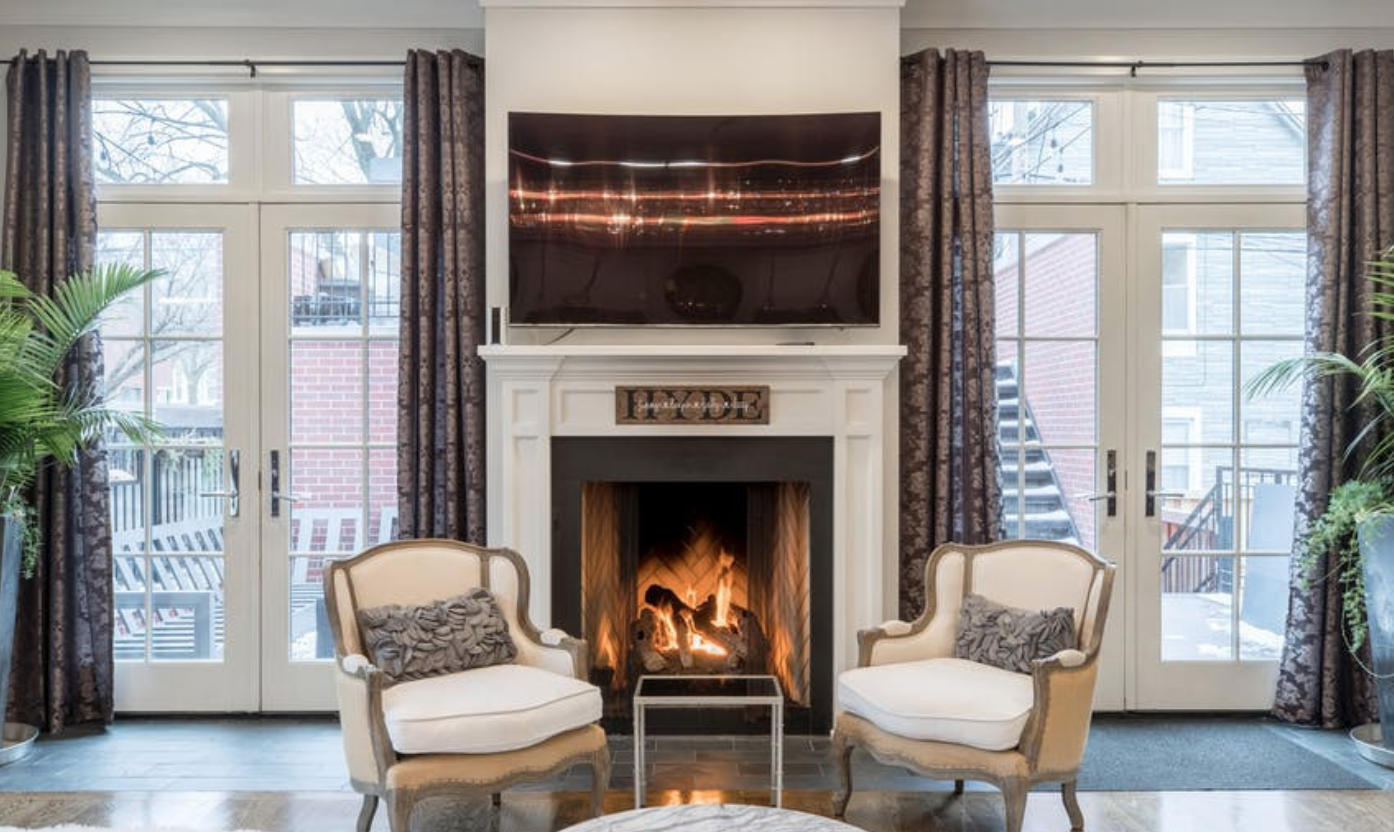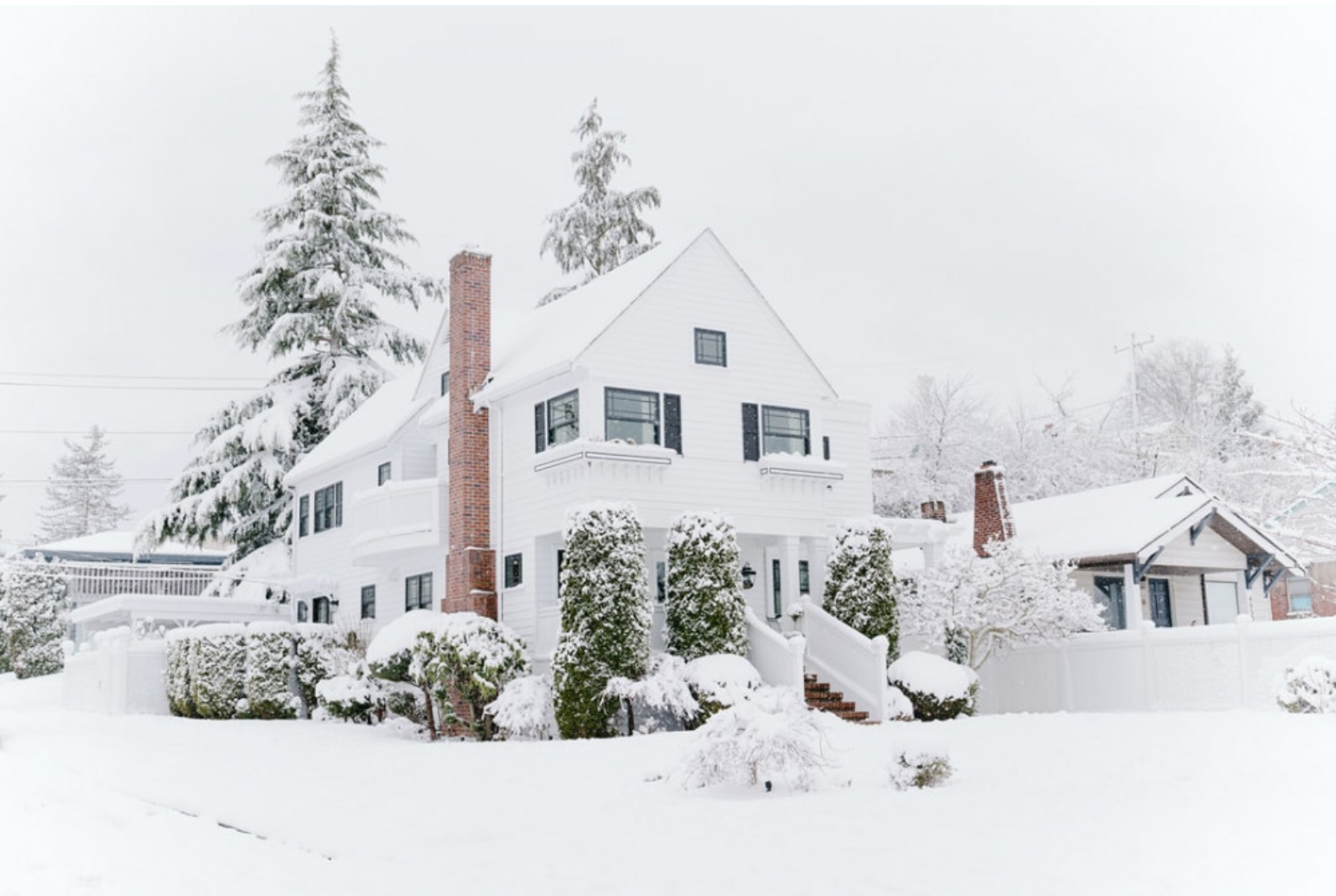The flue in your chimney lets you choose how much air flows up the chimney when using your fireplace. The flue should be adjusted to make sure that your fire is safe and efficient. You can adjust the damper to prevent air from escaping when you are not using the fireplace as well.
You should keep the fireplace flue closed when you aren’t using it. This will prevent hot or cold air from escaping up the chimney. However, you should make sure that it is completely open before starting the fire and whenever you are using the fireplace. If you light a fire and it is closed, the smoke will enter your house. Keep the flue open until the fire is completely out.
It is important to open and close the fireplace flue at the appropriate time. I wasn’t aware of this. We enjoyed our fireplace this winter many times, and we are now in summer, and I realized that I left the flue open. So I researched the topic, and this is what I learned.
Should the Fireplace Flue Be Open or Closed?
You should keep the fireplace flue closed when you aren’t using it, but it is very important to open it all the way before you light a fire. You should keep it completely open until the fire is out all the way. When you aren’t using the fireplace, closing the flue will keep hot or cooled air in the home. An open flue is similar to opening a window, so keep it closed.
However, if you leave it closed when you light a fire, the smoke has nowhere to escape. It will return back into your home. This is why it is very important to make sure that the flue is completely open when you light a fire. You need to keep it open until the fire is completely out and there is no more smoke.
What Types of Flues Dampers Are There?
There are two main types of chimney flue dampers. The first is a throat damper. This type is very convenient, and it closes the base of your chimney. This is similar to closing your windows. It is easy to see if it is open or closed because you can lean over and take a look. It usually opens or closes with a knob or a rod. This is the type we have for our chimney.
Another type is a top mount damper, which seals the chimney cap. It insulates the entire flue. The advantage of this type of damper is that it prevents animals, debris, or insects from falling down the flue. You will usually find a controlling cable or handle on the wall of your fireplace.
==>You may also be interested in whether it is safe to leave a fireplace burning overnight.
How to Know If Your Flue Is Open or Closed
How you determine whether the flue is open or closed depends on what type of damper you have. If you light a fire and it is closed, it is easy to tell because smoke will back up into your home. For this reason, it is important to know whether the damper is open or closed at all times.
One way to find out is to feel for a draft. When the flue is open, the air will circulate through the chimney, and you should be able to feel air that is the temperature of the outdoor air. You can also take a look in the chimney. Look up the fireplace to see if you can see the sky outside. If you have a throat damper, you will be able to touch it to see if it is open or closed.
Another method is to become familiar with the position of your rod, your handle, or other device that controls the flue. Learn the position the device is in when it is open and when it is closed so that you can double-check when you plan to use the fireplace.
How to Open Your Fireplace Flue
There are different types of controls to open and close your fireplace flue. Throat dampers usually have a rod, and you will push it or lift it to open the damper. They could also have a knob that rotates, and they are usually located on the outside of the fireplace. If you have a top mount damper, you will likely pull a chain or a handle that is spring loaded. When it is open, the chain or the handle isn’t secured, and when it is closed, it is.
When you have a throat damper, look for a rod inside the fireplace. If you can push it further, then you will open it. If it has a knob, you may need to try it out. Turn it all the way in one direction and look to see if it is open or closed. Then, you should make a note of which way opens it and which way closes it.
If you have a top mount damper, you should pull the chain. When you pull it down, then the damper will spring open as long as you don’t secure the chain. This is a great way to make sure that the flue is open anytime you plan to start a fire.
As you get to know your chimney, you will find it easier to tell if the flue is open or closed. This is important because you need to open it every time you want to start a fire, and you will want to keep it closed when you aren’t using it.
Video Demonstration: How to Operate Your Damper
I was surprised to learn how many different types of dampers there are. You must become familiar with the type you have before you light a fire. Lighting a fire without opening the fireplace flue will make smoke spill into the house, which can be very dangerous.
This video from the Chimney Safety Institute of America goes over the most common types of dampers and shows how to open them. You could potentially have one different from the ones shown in the video. If you are unsure how to open your damper, you should contact a professional before lighting a fire.
Final Words
If you have a fireplace, it is important to know whether or not the flue is open. You will want to keep it closed unless you are using it. When you use it, make sure that it is open before you light the fire, and keep it open until the fire is completely out.
There are different types of dampers for your chimney, so you should start out by knowing what kind you have. A throat damper is at the base of the chimney, while a top mount damper is at the top of the chimney. It is much easier to tell whether the throat mount damper is open or closed. You should take the time to familiarize yourself with the type you have so that you can operate your fireplace safely and keep it closed when you aren’t using it.
Related Posts:





We have a fireplac e in an house nearly 100 year old..We have it cleaned annually…We have a fire in fireplace nearly every evening in fall a nd winter and sometimes early in Spring..
I was recently cleaned…and we check the knob right to open..(the knob read left to close-right to open),, thinking it was open..I started the first fire of the season to have the whole house fill with smoke…apparently it was NOT….I turned the flu to the right until it would go no further right and tried again the next evening..same results.. I can see some light when I get on my back on the floor with flashlight but not a lot..I am wondering if perhaps this nearly 100 year old flu is shot! and the hunt begins for someone to fix it! It is the original..,the chimney has been repaired over the years but I do not recall anyone-Mom or Dad-saying anything about the flu. We just got a nice load of firewood..right size and dry and now this!! Any suggestions….
Dealing with an old fireplace and flue system can indeed be tricky, especially in a house that’s nearly 100 years old. It’s great that you’ve been diligent about having it cleaned annually, but age and wear can certainly lead to issues that cleaning alone might not address.
First off, it’s important to stop using the fireplace until you’ve resolved the issue. Continuing to use a fireplace with a potentially malfunctioning flue can be dangerous, as it can lead to smoke and carbon monoxide entering your home.
Here are some steps you can consider:
Check the Flue Mechanism: It sounds like you’ve already tried this, but it might be worth another look. Sometimes, the mechanism can be stiff or partially seized, especially in older systems. Make sure you’re turning it in the correct direction and see if it’s actually opening. It’s possible that the mechanism could be broken or disconnected.
Visual Inspection: You mentioned seeing some light, which is good, but a limited view can be deceiving. Consider using a mirror or a smartphone camera to get a better look up the flue. You might spot something obstructing it or notice signs of damage.
Consult a Professional: Given the age of your house and fireplace, it might be time to call in a professional chimney sweep or a fireplace technician. They can perform a thorough inspection, not just of the flue but of the entire chimney structure. Old chimneys can have various issues, like cracks, creosote buildup, or even structural problems.
Explore Repair or Replacement Options: If the flue is indeed damaged or not functioning properly, a professional can advise you on whether it can be repaired or needs to be replaced. In some cases, older chimneys and fireplaces can be retrofitted with newer, safer systems.
Safety Measures: While addressing the immediate issue, also consider installing additional safety measures like smoke detectors and carbon monoxide detectors near the fireplace area if you haven’t already. This is especially crucial in older homes.
I hope this helps.